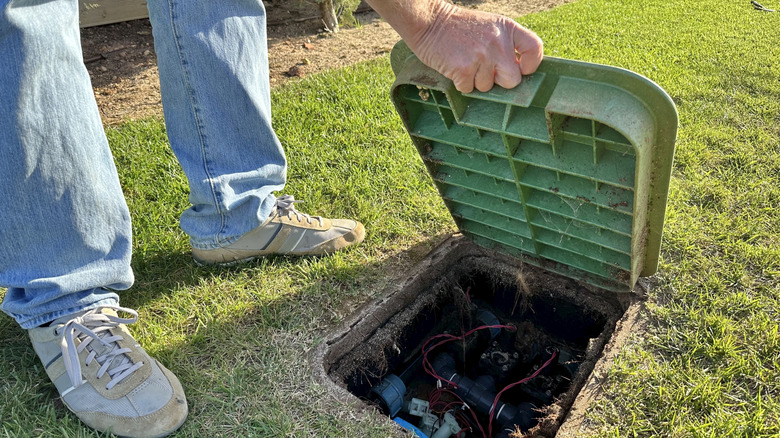For A Sprinkler System That Survives The Cold, This Is When You Should Winterize Them
Preparing your sprinkler system for the freezing winter months is essential to avoid costly damage. However, with your grass and plants still requiring adequate hydration well into fall, figuring out the best time to carry out this process can be tricky. This window may differ depending on how severe the cold temperatures are where you live and how soon they tend to arrive. Becoming familiar with weather patterns and forecasts in your area is half the job done. Once you have a rough idea when the first frost might occur, plan to winterize your sprinkler system at the very least one week prior.
Commonly known as winterization or blow out, this procedure basically consists of removing all signs of water from pipes, valves, and sprinkler heads so it won't freeze. Water expands when it freezes, which can lead to the system's different components cracking and breaking. This is why winterization is such a crucial fall lawn care task that you might be forgetting about.
When to winterize sprinklers in each climate zone
Generally speaking, the best time of the year to blow out or winterize sprinklers is in late October and early November. This is typically when temperatures start to drop significantly in most countries in the Northern Hemisphere. With that said, the U.S. is a very large country with wildly varying climates. Gardeners in the north, or in hardiness zones between 3 and 5, may need to move this date forward a few weeks. Sometimes frosts happen as early as September in these areas, which means you'll need to have your irrigation system ready before then. The same advice applies to those in higher altitudes, where cold temperatures come earlier and are more harsh.
Someone that lives by the sea or further south, in zones 7 to 11, may not need to perform this task until December if at all. In fact, shutting off your sprinklers too early will harm your greenery, which may not be as costly as broken equipment, but is definitely more heartbreaking. If freezing temperatures, namely those below 32 degrees Fahrenheit, are a rarity in your area, you don't need to worry. Just remember to keep up with weather reports and act accordingly to guarantee your sprinklers are still functional when that wonderful spring time warmth comes around.

